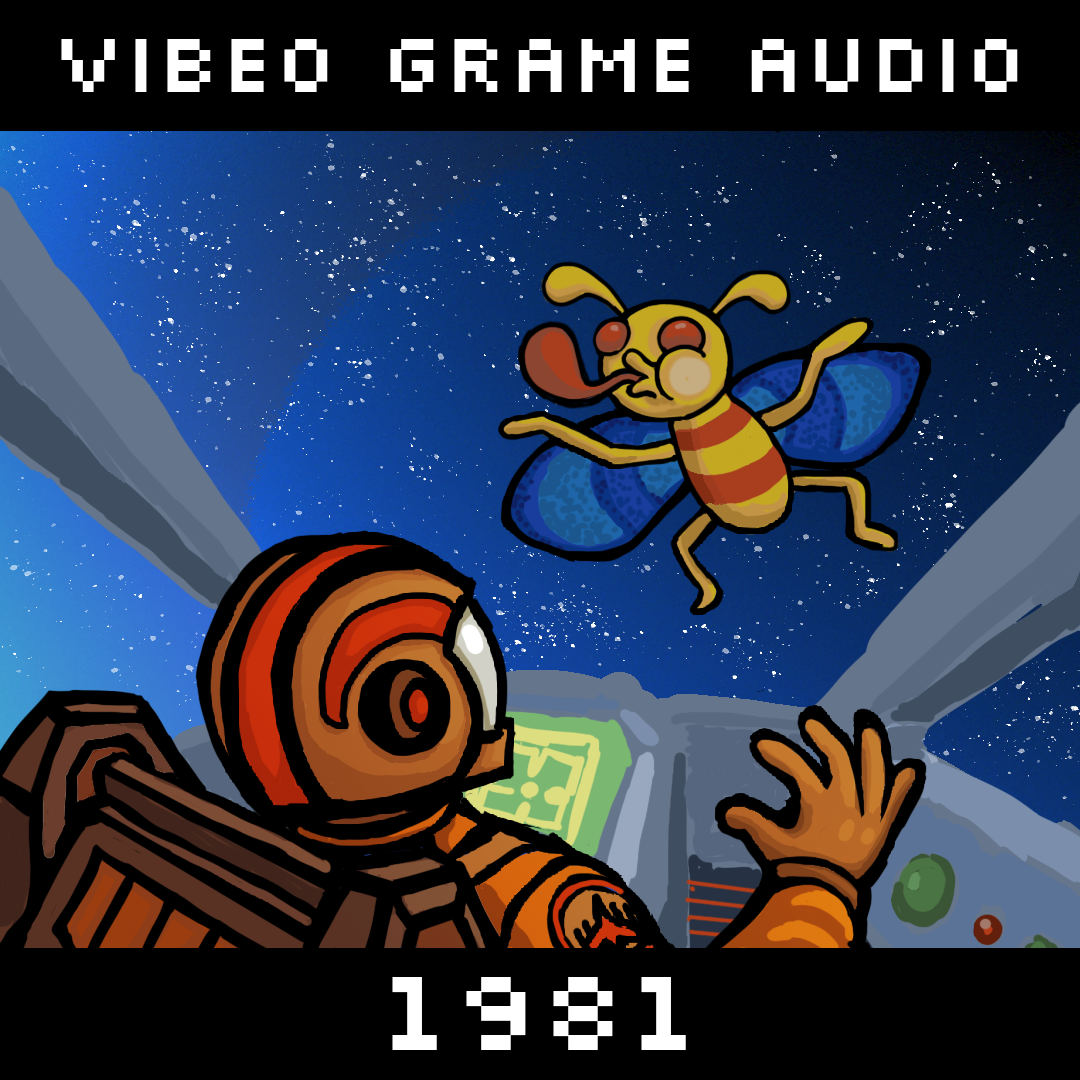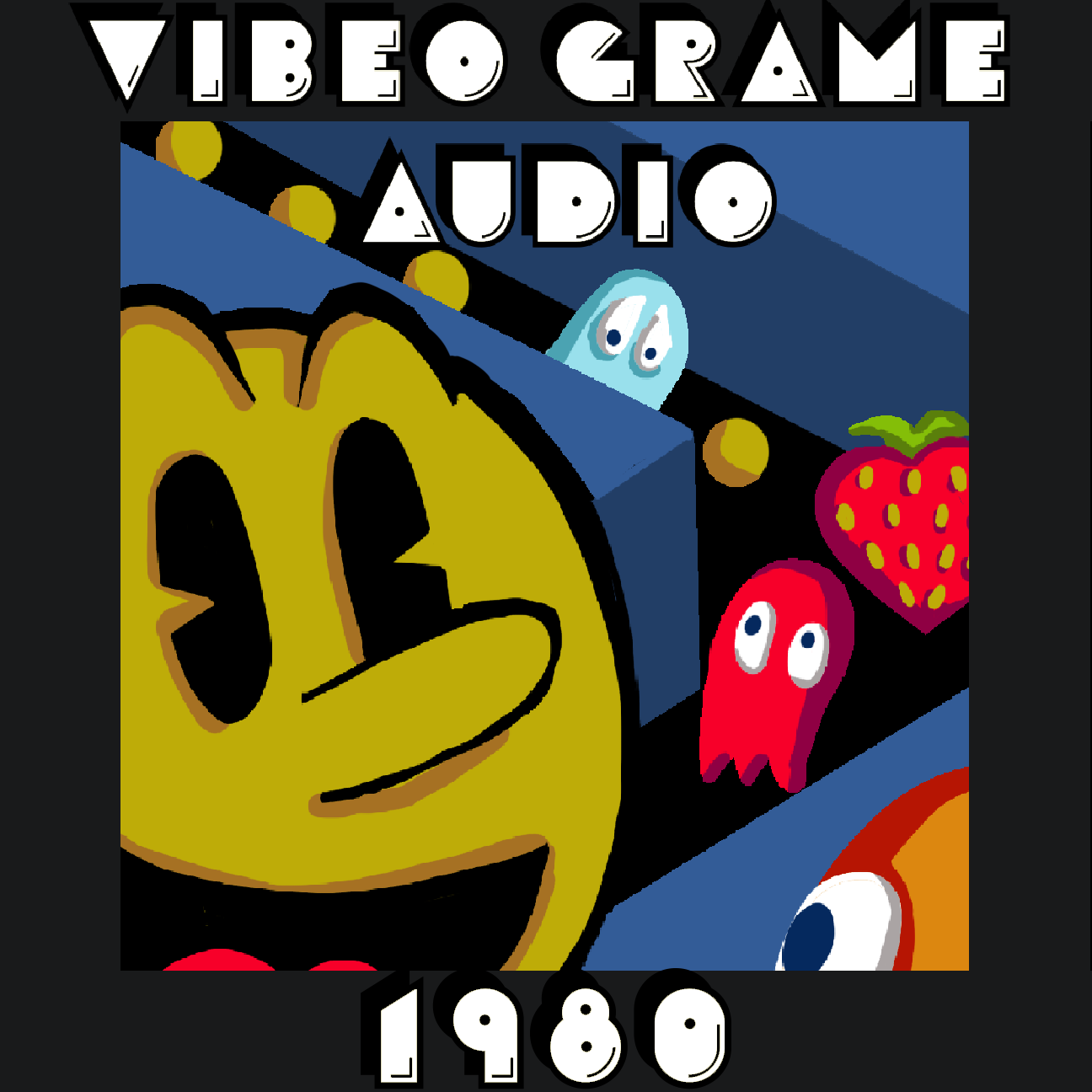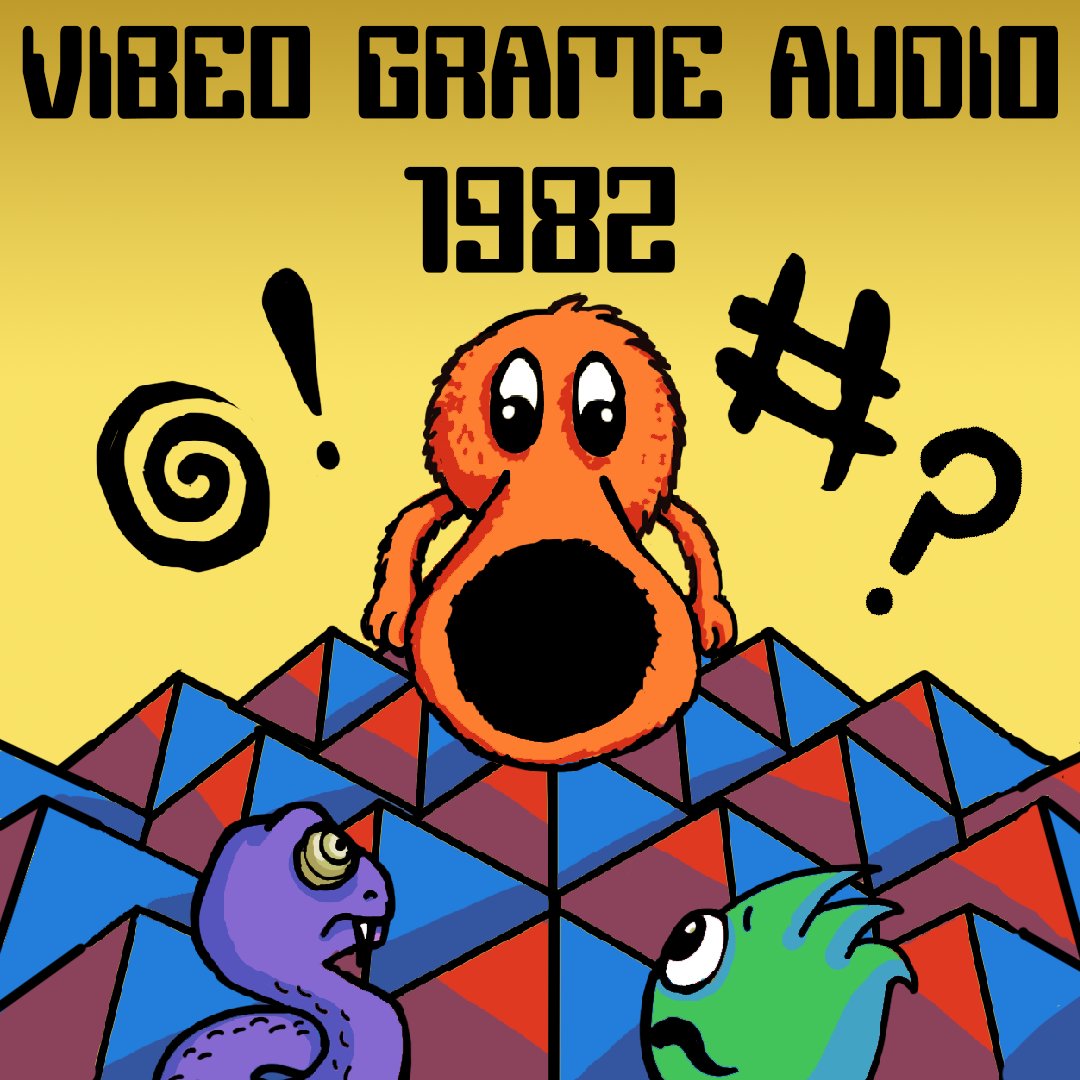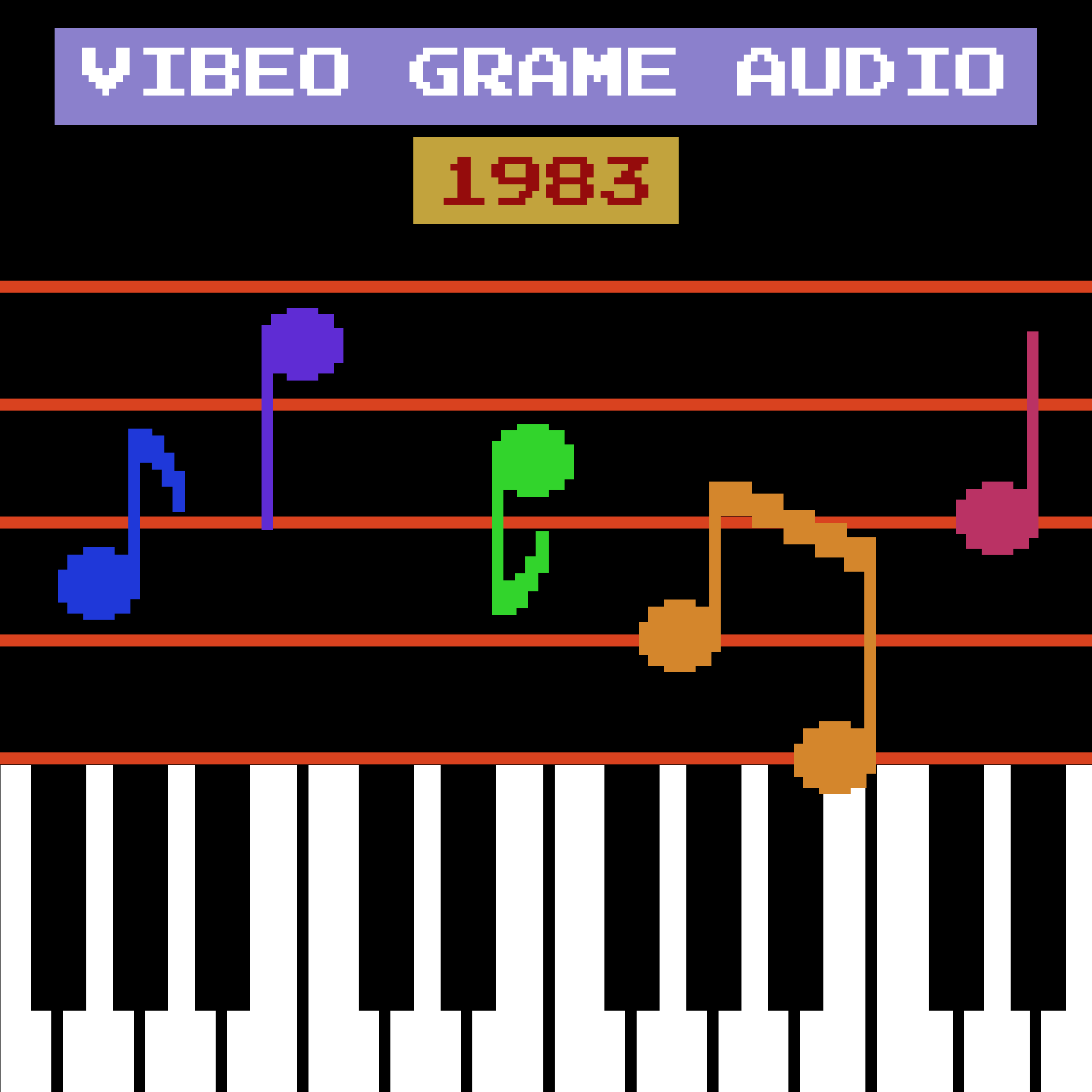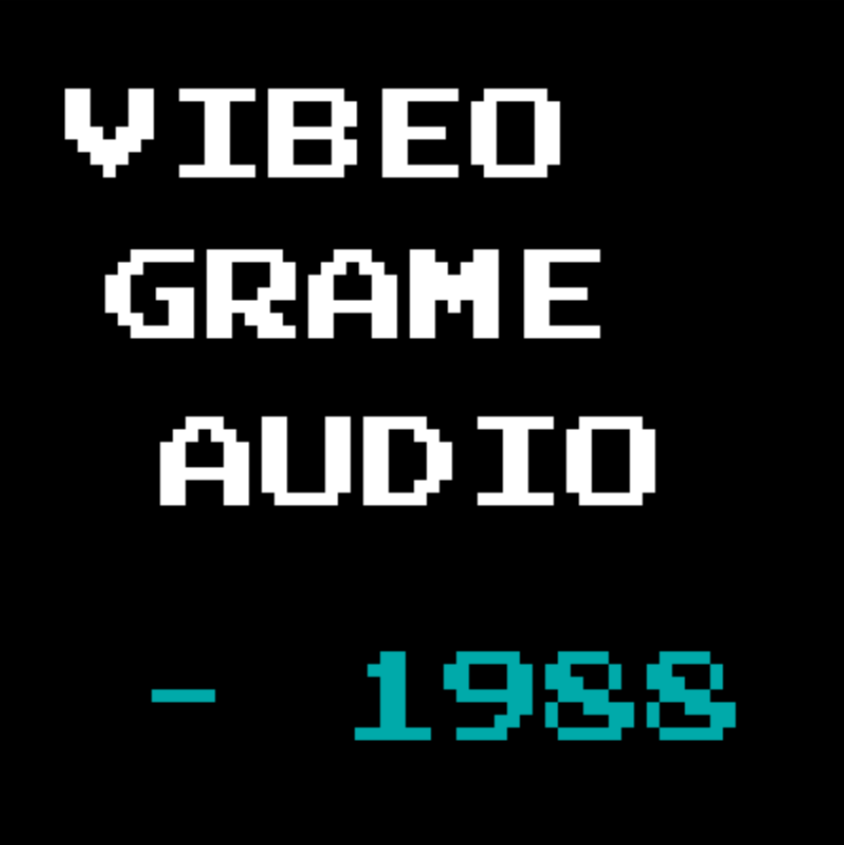Image by David Matlock (@Empfindsamer)
Okay, so my goal was to do a Top Ten list for every single year, ranking games based on their sound and music. This is the second article and already I have a problem: there just aren’t that many games in 1981. Technically there were dozens, at least dozens we still have record of and can play or watch someone else play. But the vast majority either had no audio at all or used it so sparingly that there’s nothing to talk about.
Welcome to the Top Four of 1981!
That’s right, there were only four games I thought worth talking about. Well, talking about the audio. If you want to talk about games in general, 1981 gives you quite a lot, but unless the computer makes noises at you, then it doesn’t belong here.
Starting now, I’m going to include the name of the composer or composers for each game, provided I can find that information. Until the mid-80s, most companies did not care about proper attribution for their products. Games didn’t have credits listed and if the game was developed by a team instead of a solo dev, good luck finding the sound designer. I did my best for now, but there are some games I just couldn’t find anything for. If you happen to know, or if I misattributed anything, fill me in!
#4: Snafu
Composer: Russel Lieblich
Platform: Console (Intellivision)
Most people my age or younger were raised with the belief that video games sprung into existence, fully formed, with the NES or Sega Master System. A quick google search will tell you those consoles were part of what’s called the “Third Generation.” I’m no mathematician, but it sounds like there had to be one, maybe even two other generations before them. Turns out there was a whole video game industry that had been going for fifteen years before the NES was introduced. Who knew!
I deliberately ignored the first generation of consoles because they were incapable of sound. However, each of the second generation of consoles was shipped with at least one sound channel. And in 1981, the debate over which console was best wasn’t Nintendo vs. Sega - it was Atari vs. Intellivsion. The Atari 2600 came out in 1977, and, for the time, was incredibly advanced and just dominated the market. Nothing else even came close until Mattel released the Intellivision in 1980. I say this as impartially as possible, but the Intellivision absolutely blows the Atari 2600 out of the water in every single department, sound included. So I’m sad to see it has faded into obscurity, remembered only by lucky Gen Xers and retro enthusiasts. Mattel never developed another console and gave up on video games after the (spoiler warning) video game crash the next year.
Unless, of course, you count Tommy Tallarico’s newest venture to recreate the brand with the Amico after he bought the rights, which I do not, because until he actually ships the damn thing it might as well be the Fyre Festival of video game consoles. Sorry Tommy. Love you! <3
Anyway…
Snafu is a simple game, but it shows off the Intellivision’s superior tech compared to the other consoles. For instance, it was one of the few in the second generation to feature three sound channels and a noise generator, a power that it used liberally. Not only did Snafu contain multi-voiced stingers of its own, but these were original compositions by a specially credited composer - nearly unheard of in 1981!
#3: Galaga
Composer: Nobuyuki Ohnogi
Platform: Arcades
I mentioned in the last article that video game evolution doesn’t progress linearly. Comparing games released at the same time doesn’t guarantee those games were all made with the same level of tech. However, comparing games with their sequels, spin-offs, and clones gives a much more accurate picture of how the genre changes over time. (When one game is a “clone” of another, that doesn’t necessarily mean it’s exactly the same tech, only that it feels like the same game.)
Galaga is the sequel to Galaxian (which I didn’t feature last time), which is a clone of Space Invaders. All three games feature the same loop: you pilot a ship at the bottom of the screen, and you have to shoot at the enemy ships at the top. Galaga massively improved on the formula and was the biggest hit of all the Space Invader clones.
Unfortunately the dynamic music featured in Space Invaders was lost in later iterations. But overall the sound design has improved exponentially. While the sound effects are still bleeps and bloops, they are all aurally distinct. You can tell just from listening to the game which thing is doing what. Due to the sheer number of sound effects playing at all times, there is no room for BGM. Instead, catchy stingers play during transitions and other down time.
#2: Frogger
Composer: I don’t actually know. Seriously, comment and tell me if you know the person’s name.
Platform: Arcades
Games which featured BGM tended to use a simple formula: write a single tune and just play it the whole time. Since arcade games at the time featured one level played over and over again, that formula made sense. Frogger might then be the first ever game to feature multiple tracks in its one level.
Technically, these tracks aren’t BGM. Every time a new frog starts, which happens if you “home” a frog at the top of the screen or die, a unique stinger will play. There is only one BGM track, which always plays after the stinger. But due to the short length of the game loop you aren’t likely to hear much of the BGM at all. Instead, you get the impression that every frog comes with its own unique theme.
As far as I’m aware, all of the tracks are pulled from pre-existing works. The only one I know for sure is Inu no Omawarisan, a tune best captured by this inimitable artist. But someone had to arrange everything and put it into the game, and I don’t know who that was.
#1: Donkey Kong
Composer: Yukio Kaneoka
Platform: Arcades
You probably know this one, even if you weren’t around in 1981 to play it. I know I wasn’t. I was busy not being born for several more years.
Donkey Kong is the game that created the titular character and Mario, though he was called Jumpman here. (The character of his girlfriend did not appear again in any major release until Super Mario Odyssey. She is not the princess, though she dresses like her.) It’s also the game that put Nintendo on the map. Nintendo had already been around as a trading card company for nearly a century, but only recently tried its hand with video game development. Their previous attempt was Radar Scope, and while it wasn’t a complete flop, it also wasn’t a runaway hit. Donkey Kong changed all that. Not only did it make Nintendo one of the biggest names in gaming, but it kick-started the careers of two incredible developers: Gunpei Yokoi, who went on to invent the Game Boy; and Shigeru Miyamoto, who is the literal god of video games, hallowed be his name.
Donkey Kong might be the first video game to feature multiple stages instead of the same level on repeat. A paltry four stages, looped over and over, but that’s still 400% more than everyone else. With those four stages came four BGM tracks. Well… sort of. Due to the limited number of sound channels, each BGM track could only play one note at a time, and pretty much stuck with a simple bassline. Stage 2 was a single note repeated over and over. Due to the constant noise from the springs in stage 3, that one had no BGM at all. All in all, the BGMs incorporated a grand total of 4 pitches: Bb2, D3, F3, and G3. Still the best soundtrack from 1981, hands down.
I don’t think I missed anything in 1981. There just weren’t enough games to look at. But if I did, let me know! You can leave a comment if you like and hope that I remember to read the comments. Or you can @ me on any of the social media places I inhabit. I love talking about video game music!

